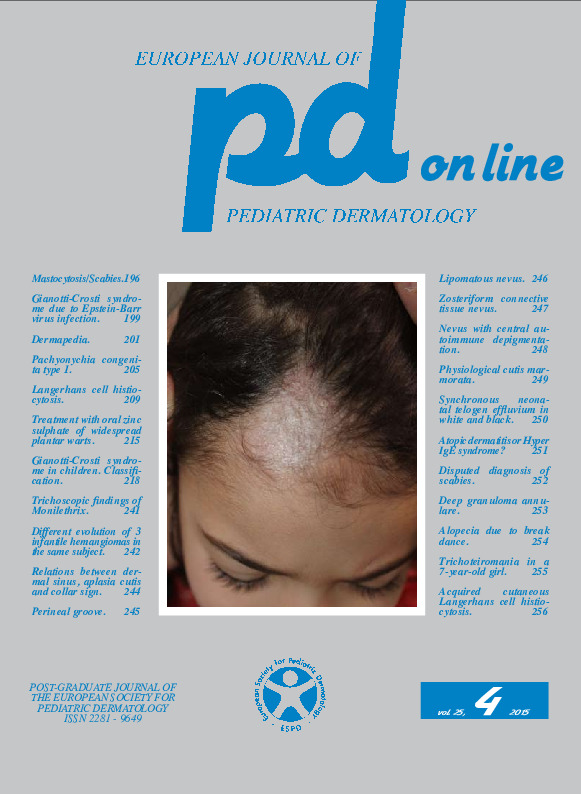Acquired cutaneous Langerhans cell histiocytosis.
Downloads
DOI:
https://doi.org/10.26326/2281-9649.25.4.1184How to Cite
Milano A. 2015. Acquired cutaneous Langerhans cell histiocytosis. Eur. J. Pediat. Dermatol. 25 (4): 256. 10.26326/2281-9649.25.4.1184.
pp. 256
Abstract
Among the pure cutaneous Langerhans cell histiocytosis (LCH) congenital Langerhans cell histiocytoma has the most favorable prognosis followed by congenital LCH type Hashimoto-Pritzker and then by acquired LCH. Congenital Langerhans cell histiocytoma always regresses spontaneously and when removed does not recur, congenital LCH regresses spontaneously in a great majority of cases. Acquired LCH, although spontaneously regressing in many cases, can in some cases progress to a multisystem form. Unfavorable prognostic factors are a larger number of lesions, their monophormism and involvement of seborrheic sites such as the scalp, the inguinal and axillary folds, the middle part of the back and chest. In our case the lesions were few in number, polymorphous and did not affect electively seborrheic sites leading to hope for a favorable prognosis.Keywords
Histiocytosis, Langerhans

